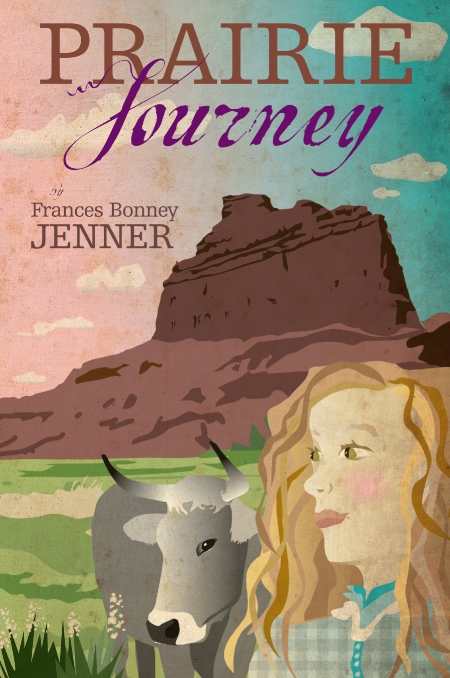Prairie Journey
A girl journeys into the unknown American West with her family, facing danger and loneliness with the bravery of a pioneer.
Friendship, bravery, and hard truths about love and loss are central themes in this story about twelve-year-old Savannah pioneering west with her family in Prairie Journey. It is a carefully researched and intimately written account of one of the westward migrations of the 1800s as seen through the eyes of a young girl.
Not only is Savannah afraid and confused about her family’s decision to emigrate west, she is also forced to reconcile the simple desires of childhood with events that require more emotional maturity. Savannah’s challenges are captured in her voice, making this story appropriate and accessible to a young audience despite its mature subject matter.
Savannah’s story begins when her father announces that they are leaving Missouri to join a wagon train heading west to California, to start a new life. To a girl of twelve who doesn’t understanding the promise of the American West, the prospect of leaving her friends and her home is frightening. Savannah fights the decision to leave but tries to rally her spirits. Along the way, even though she faces danger and loneliness, her inner struggle to be brave and to connect with her sister and new friends in the caravan is most compelling.
Author Frances Bonney Jenner’s writing is age-appropriate but touches on the realities of pioneer life. Death, injury, illness, and suffering are written into the journey with Savannah’s innocent and at times profound reactions. Yet Savannah’s constant disappearing and other instances of disobeying go almost entirely without consequence. It is as though Savannah lives in her version of an ideal world, where her parents inevitably understand everything she does and forgive her immediately, whether or not she puts herself and others in danger.
But Prairie Journey does deal beautifully with delicate issues that would have been easier to skirt around. When Savannah is given a pair of moccasins by a young Cheyenne girl, she wonders to herself, “Maybe she gave me more than moccasins. I wonder, can a person’s feet be said to see? I have a new way of seeing and walking now.” When Savannah is approached by a young boy who ran away and he asks her not to say anything to anyone, Savannah’s mind wanders to the color of the nearby flowers: “All I wanted right then was to be dancing in a bluebell dress. … I didn’t want to be here, not knowing right from wrong.” These are the subtle moments that hold weight and make Savannah real and vulnerable.
Appreciating that no author would want to linger too long over the inevitable hardships of this journey, particularly when writing for young people, there is a simplicity to Savannah’s voice that may resonate more effectively with children younger than those of Savannah’s age of twelve to thirteen. The cover and illustrations are designed well, and the layout is perfect for younger readers. Prairie Journey is a lovely introduction to historical fiction for children and will certainly help them appreciate how child pioneers lived.
Reviewed by
Sara Budzik
Disclosure: This article is not an endorsement, but a review. The publisher of this book provided free copies of the book and paid a small fee to have their book reviewed by a professional reviewer. Foreword Reviews and Clarion Reviews make no guarantee that the publisher will receive a positive review. Foreword Magazine, Inc. is disclosing this in accordance with the Federal Trade Commission’s 16 CFR, Part 255.

